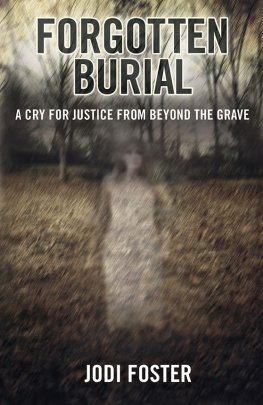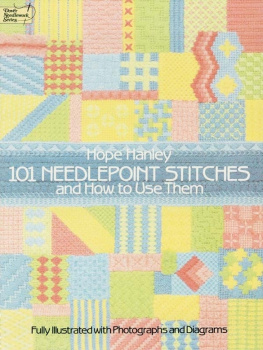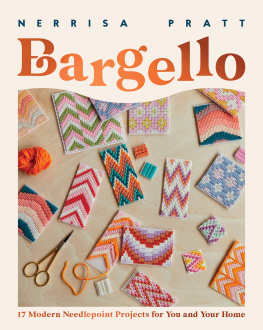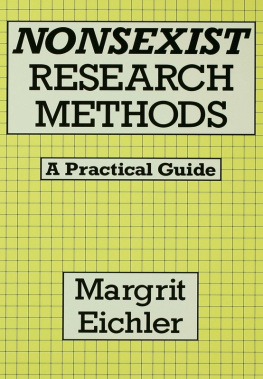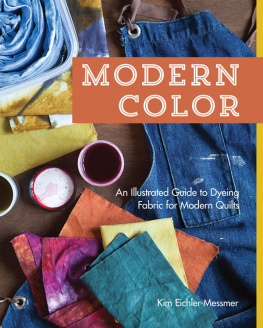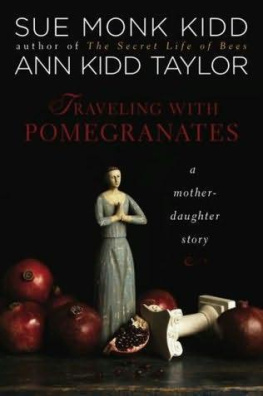Jodi Eichler-Levine - Painted Pomegranates and Needlepoint Rabbis
Here you can read online Jodi Eichler-Levine - Painted Pomegranates and Needlepoint Rabbis full text of the book (entire story) in english for free. Download pdf and epub, get meaning, cover and reviews about this ebook. year: 2020, publisher: The University of North Carolina Press, genre: Home and family. Description of the work, (preface) as well as reviews are available. Best literature library LitArk.com created for fans of good reading and offers a wide selection of genres:
Romance novel
Science fiction
Adventure
Detective
Science
History
Home and family
Prose
Art
Politics
Computer
Non-fiction
Religion
Business
Children
Humor
Choose a favorite category and find really read worthwhile books. Enjoy immersion in the world of imagination, feel the emotions of the characters or learn something new for yourself, make an fascinating discovery.

- Book:Painted Pomegranates and Needlepoint Rabbis
- Author:
- Publisher:The University of North Carolina Press
- Genre:
- Year:2020
- Rating:3 / 5
- Favourites:Add to favourites
- Your mark:
- 60
- 1
- 2
- 3
- 4
- 5
Painted Pomegranates and Needlepoint Rabbis: summary, description and annotation
We offer to read an annotation, description, summary or preface (depends on what the author of the book "Painted Pomegranates and Needlepoint Rabbis" wrote himself). If you haven't found the necessary information about the book — write in the comments, we will try to find it.
Painted Pomegranates and Needlepoint Rabbis — read online for free the complete book (whole text) full work
Below is the text of the book, divided by pages. System saving the place of the last page read, allows you to conveniently read the book "Painted Pomegranates and Needlepoint Rabbis" online for free, without having to search again every time where you left off. Put a bookmark, and you can go to the page where you finished reading at any time.
Font size:
Interval:
Bookmark:

PAINTED POMEGRANATES AND NEEDLEPOINT RABBIS
WHERE RELIGION LIVES
Kristy Nabhan-Warren, editor
Where Religion Lives publishes ethnographies of religious life. The series features the methods of religious studies along with anthropological approaches to lived religion. The religious studies perspective encompasses attention to historical contingency, theory, religious doctrine and texts, and religious practitioners intimate, personal narratives. The series also highlights the critical realities of migration and transnationalism.
A complete list of titles published in this series appears at the end of the book.
How Jews Craft Resilience and Create Community
Jodi Eichler-Levine
THE UNIVERSITY OF NORTH CAROLINA PRESS
Chapel Hill
2020 The University of North Carolina Press
All rights reserved
Manufactured in the United States of America
Designed by Richard Hendel
Set in Miller and Didot types by Tseng Information Systems, Inc.
The University of North Carolina Press has been a member of the Green Press Initiative since 2003.
Cover illustrations: (foreground) detail of Pomegranate in Surface Embroidery with Beads (2017) by Arlene Diane Spector; (background) detail of Torah mantel AnochiI Am by N. Amanda Ford. The embroidered Hebrew word is Anochi, a biblical form for I am, which is found at the beginning of the Ten Commandments.
Library of Congress Cataloging-in-Publication Data
Names: Eichler-Levine, Jodi, author.
Title: Painted pomegranates and needlepoint rabbis : how Jews craft resilience and create community / Jodi Eichler-Levine.
Other titles: Where religion lives.
Description: Chapel Hill : The University of North Carolina Press, 2020. | Series: Where religion lives | Includes bibliographical references and index.
Identifiers: LCCN 2020010717 | ISBN 9781469660622 (cloth : alk. paper) | ISBN 9781469660639 (paperback : alk. paper) | ISBN 9781469660646 (ebook)
Subjects: LCSH: Jewish craftsUnited States. | JewsUnited StatesIdentity. | HandicraftSocial aspectsUnited States. | HandicraftUnited StatesReligious aspects.
Classification: LCC BM729.H35 E33 2020 | DDC 745.5089/924073dc23
LC record available at https://lccn.loc.gov/2020010717
Portions of the conclusion appeared earlier in somewhat different form in Jodi Eichler-Levine, Mediating Moses and Matzah, in The Old and New Media issue, AJS Perspectives (Spring 2018): 1618.
For the knitters, weavers, spinners, potters, stitchers, woodworkers, quilters, and all who craft, in solitude, in community, in love: may the work of your hands prosper.
PROLOGUE
The Needlepoint Rabbi
INTRODUCTION
Suturing the Mortal World
1
IN THE BEGINNING
Generative Resilience and the Creation of Gender
2
BLACK FIRE, WHITE PIXELS, AND GOLDEN THREADS
Technology and Craft
3
THREADS BETWEEN PEOPLE
The Art of the Gift
4
BEZALELS HEIRS
Crafting in Community
5
TIKKUN OLAM TO THE MAX
Activism and Resistance
6
GENERATING THE GENERATIONS
Crafting Memory in a Fragile World
CONCLUSION
The Fabric of Forever
PAINTED POMEGRANATES AND NEEDLEPOINT RABBIS
An old man draped in blue and white robes rests on my office windowsill. He is there because of Grandma Salle.
This needlepoint rabbi in a golden frame is the precise sort of bearded old sage I often wish I could displace from the center of imagined Jewishness. I grew up at a time when women were at long last becoming rabbis in America but female faces in the pulpit were rare. This rabbi reminds me of the centuries before those changes. In that same ancient vein, even the color palette feels Old Worldreds and oranges and bits of bright, garish yellow adorn the background and the Torah he holds. Despite my dread and revulsion for that yellow, I admire the stitches that created the man: just one kind of stitch, on the diagonal, they slant so neatly, and the threads are all the same weight. I see none of the more complex, multidirectional stitches or beading that stymied me when I attempted needlepoint at a workshop in Atlanta. Yet, Grandma Salle crafted this man from a ton of stitches, hundreds, thousands, so even, with nuances up close that I cant see at a distance.
A few years ago, in November 2017, I was in the midst of moving, and my parents accompanied me as I cleaned out the rental house basement. They had come about some of my childhood toys, but then they saw Grandma Salles needlepoint propped against a baseboard in the dust-bunny-filled suburban gloom.
My fatherGrandma Salles sonsaid I should get rid of it. Its ugly. His statement carried the weight of other things, including my mothers inability to let go of my childhood toys, which now even my own daughter has outgrown. Throw it out, he suggested, grumpily, urging me to let it go.
My mother was aghast. But she made it! she insisted.
But she made it. Hands and emotions matter. I touched its dusty frame. Something of the essence of my grandmother lingered in that piece decades after her death. It was vibrant matter, a way to feel a tactile, crafted Judaism.
Rather than emphasizing texts and rabbis, which have long been at the center of how we think about Judaism, this book calls our attention to crafts and laypersons, mostly women. In that process, I have found both new practices and new styles of objects made by people who are crafting a Judaism of feeling on multiple levels. It is a Judaism of literal feeling, one attuned to the sense of touch, and a Judaism of feeling emotions, a Judaism of affect. This Judaism is one of waves, not static substances, one of subtle frequencies, of sensations that cannot always be expressed in language. Those feelings accrue at the intersections of bodies, objects, and the making of those objects. It is a Judaism in which matter has tremendous power. At the same time, this is a Judaism that is always in motion, always being constructed, never finished.
For Grandma Salle, needlepoint was a daily devotion, then a visual, everyday presence signaling her Jewish identity in her home. As much as I know that making Jewish homes in America is an ambivalent, layered process, that day in the basement I found myself of two minds about what to do with the rabbi. On the one hand, I was the one who had kept the needlepoint for so many years, dragging it across the country to multiple jobs, though I had never hung it up. On the other hand, I had too much stuff. As we quibbled in the basement, I thought of the many artists and crafters I had already encountered, how their objects hold tremendous power linked to identity, memory, and Jewishness. How could I throw away my own ancestors careful stitches?
It was decided. Its totally ugly, I said, but she made it. Im keeping it. It can go to my office. My campus office is filled with objects: a Star of David quilted mat; a Fraggle Rock puppet; the Judah Maccabee Huggable Hanukkah Hero doll that inspired my dissertation; a bobblehead of Bernie Brewer knitting from a Stitch n Pitch night in Milwaukee. Grandma Salles needlepoint rabbi would fit right in.
I imagined what my colleagues would think when they saw him perched among my collection. Isnt it
Font size:
Interval:
Bookmark:
Similar books «Painted Pomegranates and Needlepoint Rabbis»
Look at similar books to Painted Pomegranates and Needlepoint Rabbis. We have selected literature similar in name and meaning in the hope of providing readers with more options to find new, interesting, not yet read works.
Discussion, reviews of the book Painted Pomegranates and Needlepoint Rabbis and just readers' own opinions. Leave your comments, write what you think about the work, its meaning or the main characters. Specify what exactly you liked and what you didn't like, and why you think so.

